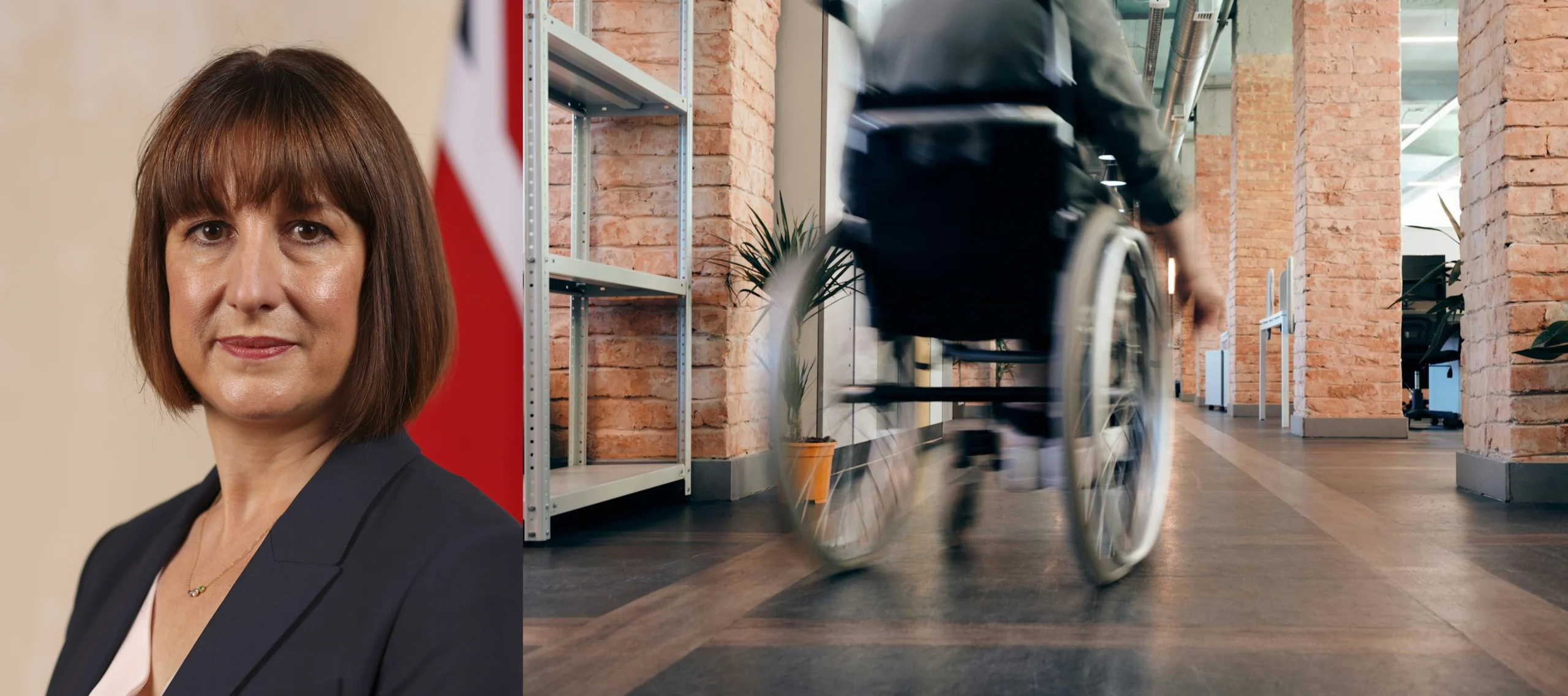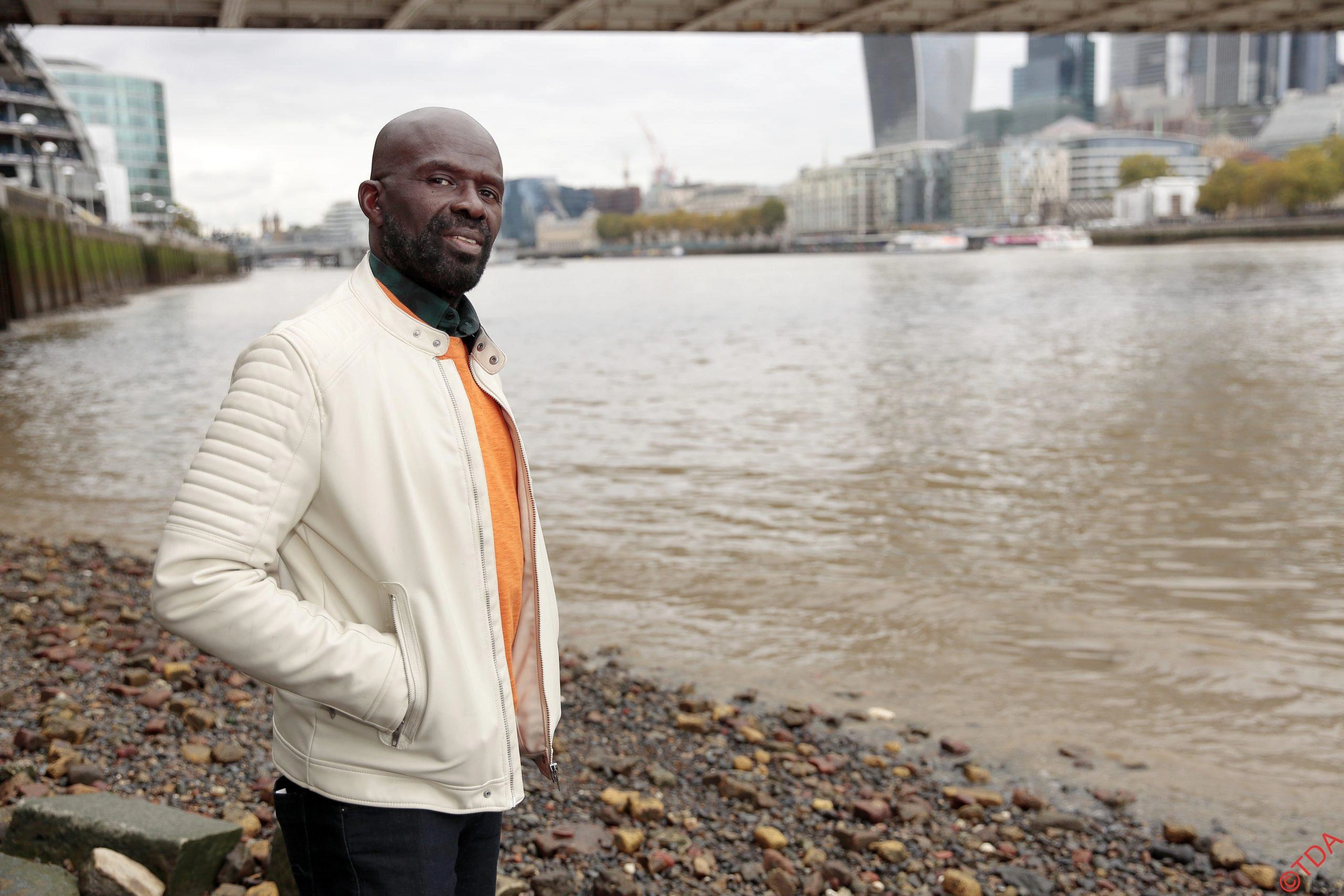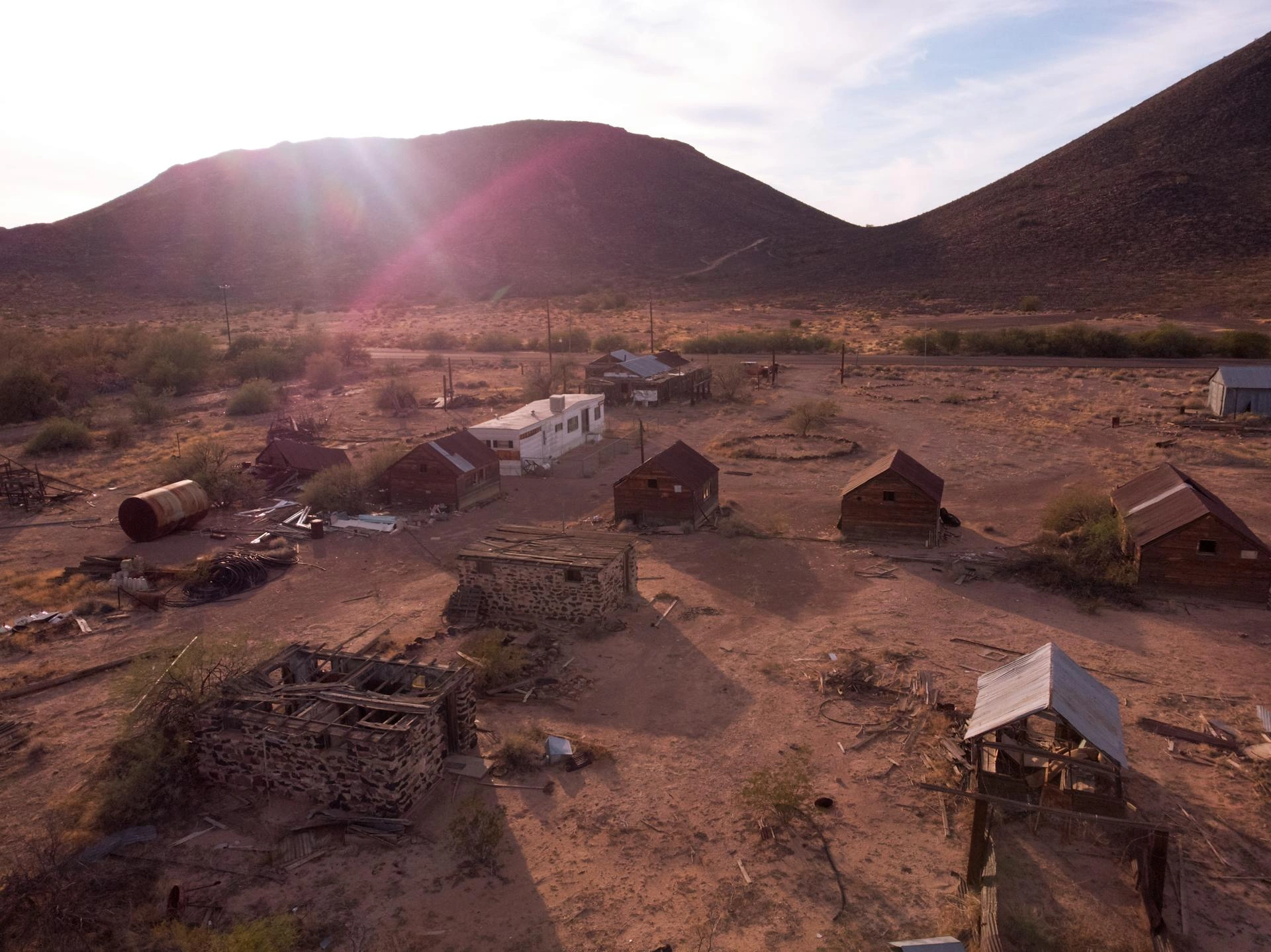The European Road Test: 2025 Volvo XC90 Ultra

Mark G. Whitchurch
- Published
- Opinion & Analysis
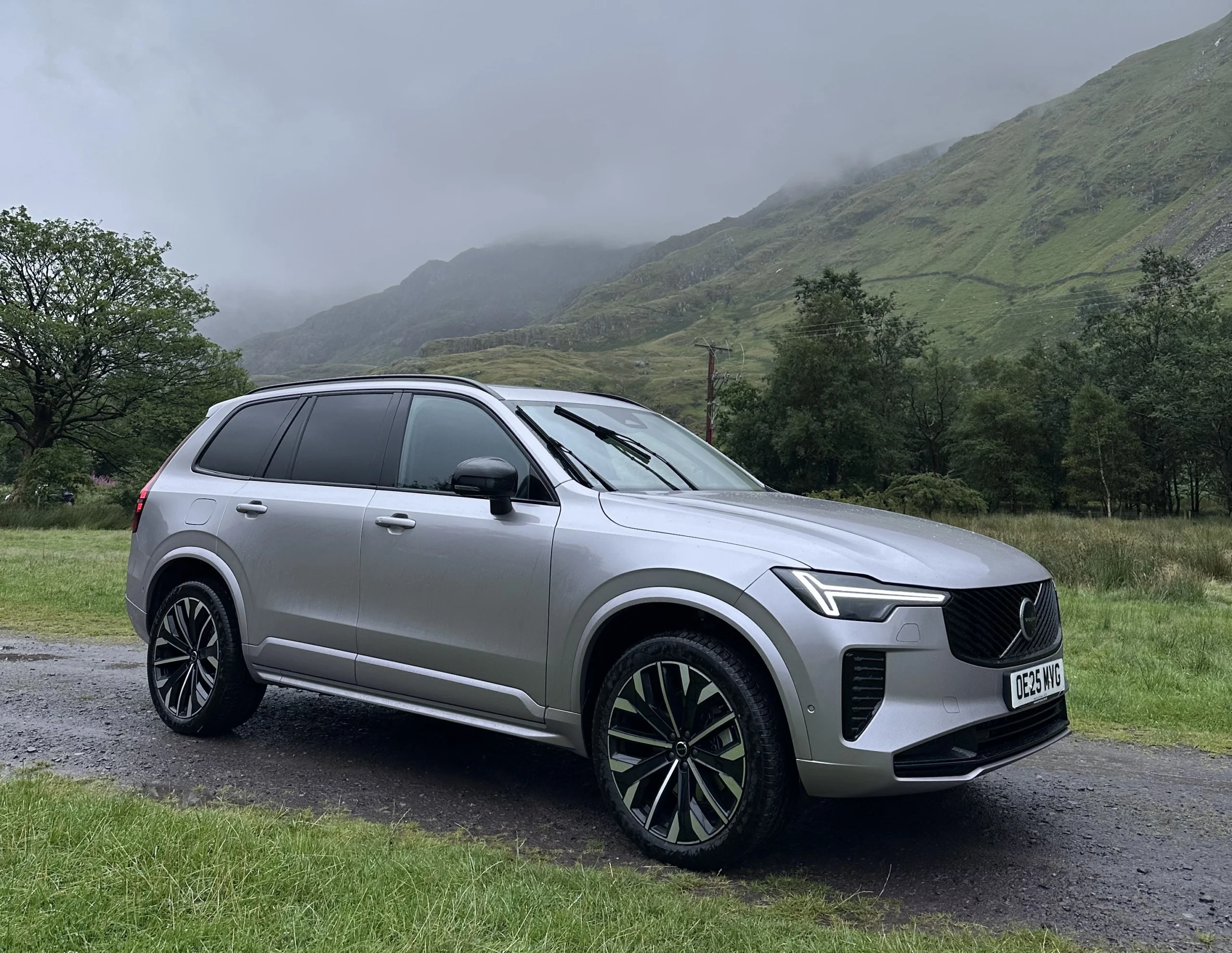
From Liverpool’s historic docks to Snowdonia’s mountain passes, Mark G Whitchurch puts Volvo’s refreshed 2025 XC90 Ultra through a true grand tour – testing its comfort, performance and practicality over motorways, coastal roads and the steep climbs of North Wales
A long weekend taking in Liverpool’s waterfront and the rugged beauty of North Wales called for a car with space, comfort and composure. Volvo’s refreshed 2025 XC90, the brand’s flagship SUV, seemed the perfect match. My test route would take in motorways, city streets, twisting Welsh A-roads and even a few cobbled lanes, with time to explore Liverpool’s cultural landmarks, cycle Anglesey’s coastal paths and hike to the summit of Snowdon (Yr Wyddfa). This would be a real-world test of how well the XC90 performs as a luxury family tourer.
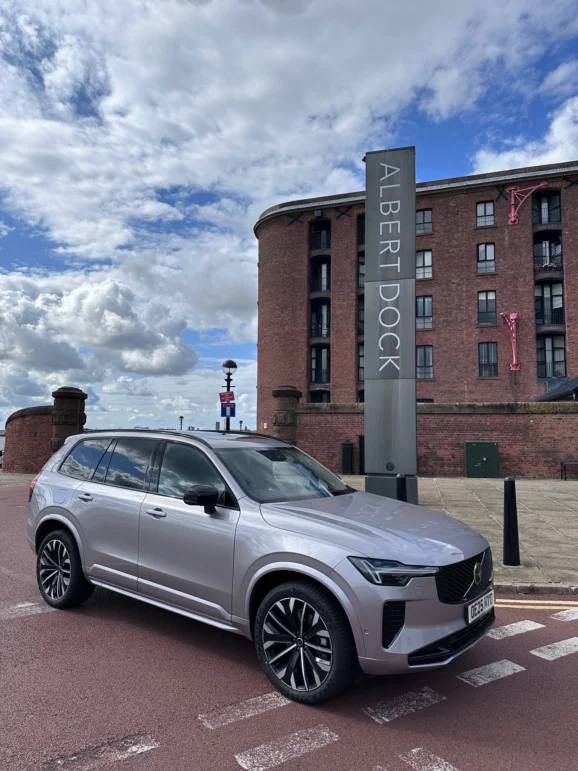
Exterior Design and Road Presence
For 2025, the XC90 receives a fresh grille, bonnet, bumper and lights. The ‘Thor’s Hammer’ matrix headlights now flow seamlessly into the wings, while the optional Dark Pack swaps brightwork for gloss black. My Ultra-spec car came in Bright Dusk – a sophisticated grey with a subtle pink hue – on 21-inch alloys that fill the arches handsomely (if not always easily cleaned).
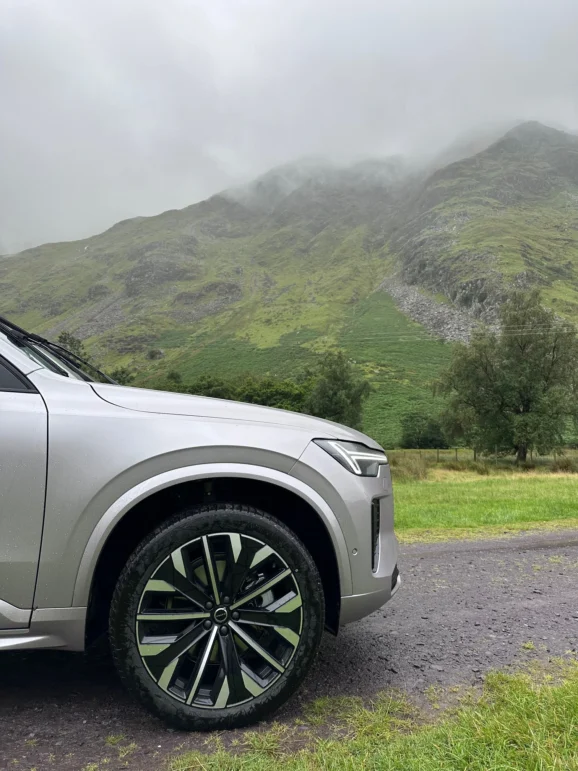
Those big wheels weren’t just for show. Crossing the Menai Strait towards Anglesey, they soaked up the sharp edges of rural B-roads easily, the air suspension and high sidewalls working together to iron out the patchwork tarmac between Beaumaris and the headland. On the sweeping B4518 from Llanbrynmair to Rhayader – with the distraction of RAF jets practising low-level manoeuvres – the XC90 felt planted and confident. Even on the tight approach to Conwy, where the medieval town walls pinch the road into single-lane sections, the proportions felt manageable thanks to the excellent visibility from that commanding SUV seating position.
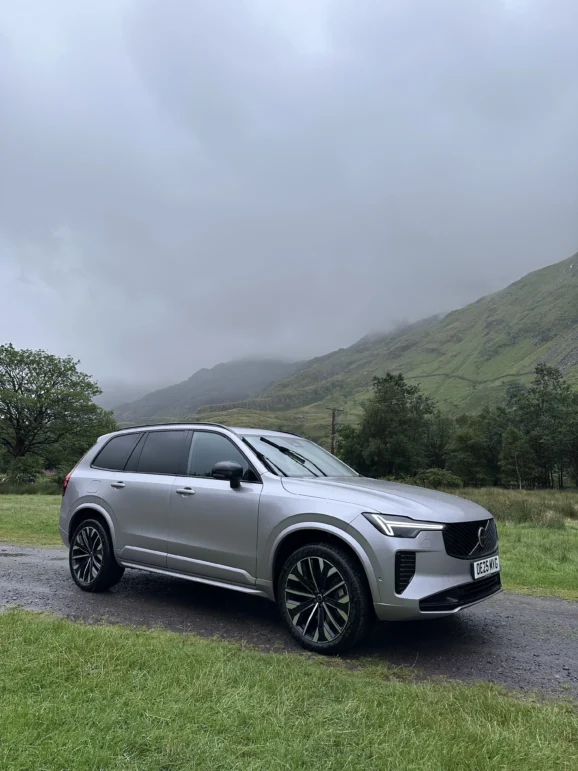
Interior, Comfort and Practicality
Ultra trim delivers the full Scandinavian treatment: open-grain wood, satin chrome, tweed dashboard inserts and a jewel-like crystal gear selector.
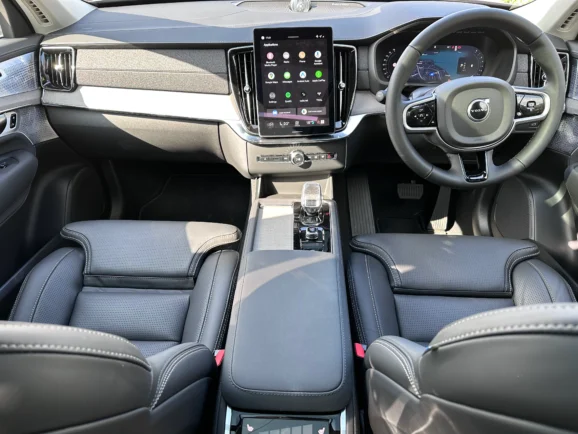
The sumptuous black leather seats are heated, cooled, infinitely adjustable and feature a built-in massage function – a highlight for my partner on the M5 stretch to Liverpool.

The panoramic glass roof, with stroke-sensitive sunblind, bathed the cabin in light, and the air suspension in Comfort mode kept the ride composed.
Space and flexibility are excellent:
• Generous second-row legroom even behind tall drivers.
• Centre seat transforms into a child booster or folds into an armrest.
• Zoned ventilation, extra USB-C ports, and vents for each row.
• Fold-and-slide second-row access to a third row trimmed in leather, with its own vents and storage.
Boot capacity easily swallowed two folding Brompton bicycles, hiking kit and clothing for four days of unpredictable Welsh weather, all under the parcel shelf.

After our ride to Penrhyn Castle, the suspension’s boot-lowering button made reloading the bikes easier. The electrically closing tailgate is still one of those small luxuries I enjoy pressing.
Technology and Infotainment
The facelift brings an enlarged 11.2-inch central touchscreen, now sitting proud of the dash and running Google’s software. Google Maps, Spotify and QR-code phone pairing worked flawlessly – invaluable for navigating to our pre-booked JustPark location a mile from Pen-y-Pass when the main car park was full.
The 1,100-watt, 19-speaker Bowers & Wilkins audio system became an essential companion – Gerry and the Pacemakers on the approach to Liverpool’s Royal Albert Dock, Beatles Red and Blue albums along the A470 home.

The surround sound was so good it occasionally out-sang the passengers.
The driver’s TFT display replaces traditional dials, with configurable layouts including a navigation map between the gauges. Steering-wheel buttons for radar cruise and infotainment are precise, and the stalks have a reassuring quality feel.
Performance
Power comes from a 2.0-litre four-cylinder petrol engine paired with a 48V mild-hybrid system producing 250hp. The hybrid unobtrusively harvests energy under braking, providing an extra shove when overtaking.
Motorways – Comfort mode, softened air suspension and light steering made the M5/M6 run north relaxing.
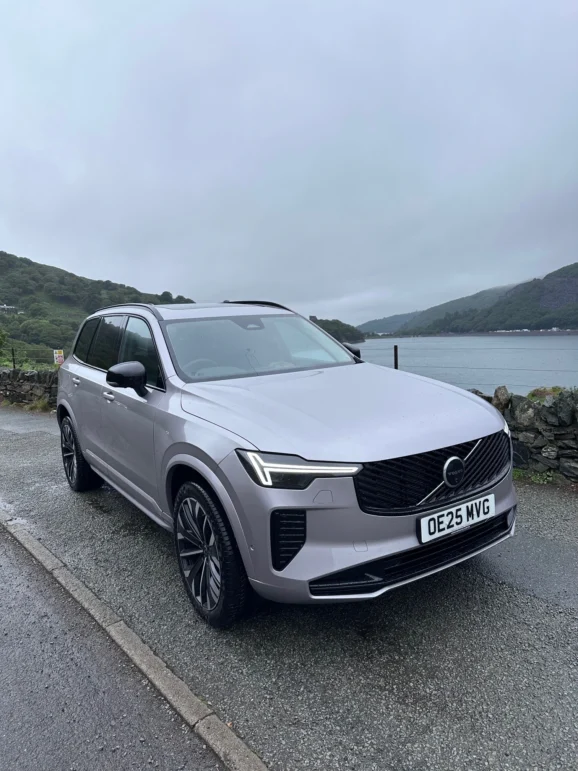
The elevated seating position gave a clear view, and radar cruise kept progress legal and safe.
A-roads – Firmer suspension and weightier steering after leaving Liverpool added precision along the coastal A55 into Conwy.

In North Wales, the updated suspension balanced composure with comfort over undulating roads.
Mountain roads – The steady climb to Pen-y-Pass was handled without fuss, and steep descents into Llanberis were well contained by progressive braking and secure AWD grip.

Economy and range – Volvo’s 32.8mpg combined figure matched my mixed-route results, despite spirited stretches and full loads. The 71-litre tank meant no mid-trip fuel stops. CO₂ is 193g/km, keeping UK road tax competitive for the class.
Driver aids – Wales’ 20mph village limits triggered Volvo’s polite three-tone chime at each change. Initially I thought it intrusive; by trip’s end I found it genuinely useful.
Travel Notes – Where the XC90 Took Us
Liverpool: Crowned European Capital of Culture in 2008, the city’s waterfront blends maritime heritage with a cosmopolitan buzz. The Royal Albert Dock – the North West’s most visited free attraction – was bustling with galleries, museums, restaurants and bars. Lunch on MV Royal Daffodil, a former Mersey ferry with 50 years’ service, offered superb people-watching. The Beatles Story Museum in the Dock’s basement recreated the band’s rise, split and solo careers in immersive detail.

Conwy base: A UNESCO World Heritage Site, Conwy’s 13th-century castle and intact town walls were built under Edward I after the defeat of the Welsh princes. The arrival of the Chester–Holyhead railway in the 19th century brought tourism to this coastline. Our base was the Bryn B&B, rated 9.8 on Booking.com, where Anne and Neil provided secure parking, a traditional room with views over the town, and an award-winning marmalade (sadly not for sale).

Cycling Anglesey: The Bromptons emerged from the boot for National Cycle Path No.5, hugging the coastline towards Penrhyn Castle – an 18th-century interpretation of a Welsh fortress built on slate industry wealth, visited by Queen Victoria and William Gladstone. Managed by the National Trust, it houses a narrow-gauge railway exhibition and acknowledges its links to the slave trade. With tyres pumped to 100psi and six-speed gearing, the Bromptons impressed over the 20-mile ride. We folded them for a £6 train journey back to Conwy.
Snowdon (Yr Wyddfa): Pre-booked JustPark space and park-and-ride shuttle to Pen-y-Pass. The Miners’ Track offered a gentler start, following the route of copper miners past lakes before a steep, boulder-lined climb to a near-vertical zigzag path. Mist shrouded the summit; we skipped the £35 per person train and queued briefly for the obligatory photo before sheltering in the café.
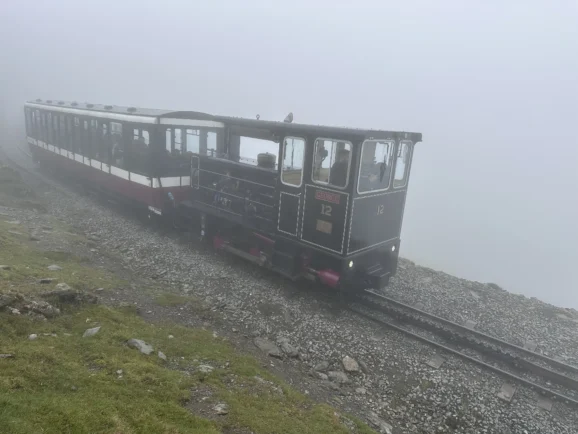
The Pyg Track descent gave stunning views but was hard on knees and ankles.

On the way we heard dozens of languages, met climbers from around the world, and noted the tireless volunteers clearing litter.
Scenic route home: Opting for the A470 rather than the motorway, we stopped at Portmeirion, the Italianate village built by Sir Clough Williams-Ellis and filming location for The Prisoner.

Lunch at its art deco hotel was the best of the trip. Further south, the Elan Valley’s Victorian dams – now a Site of Special Scientific Interest – stood as monuments to the Industrial Revolution, built to supply Birmingham’s water.

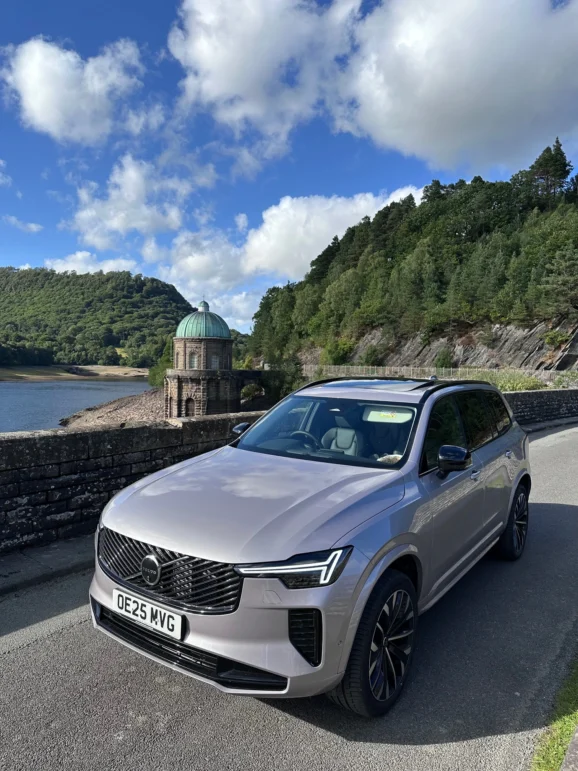

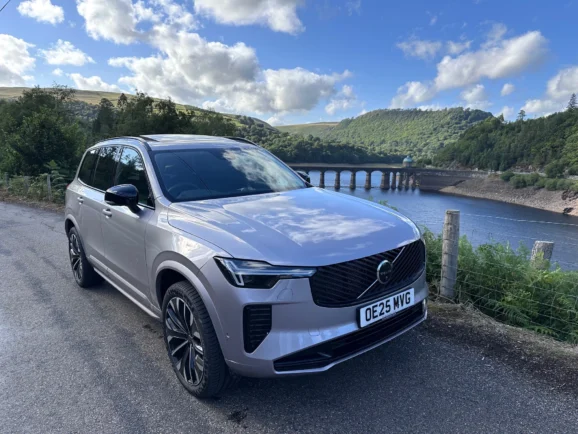
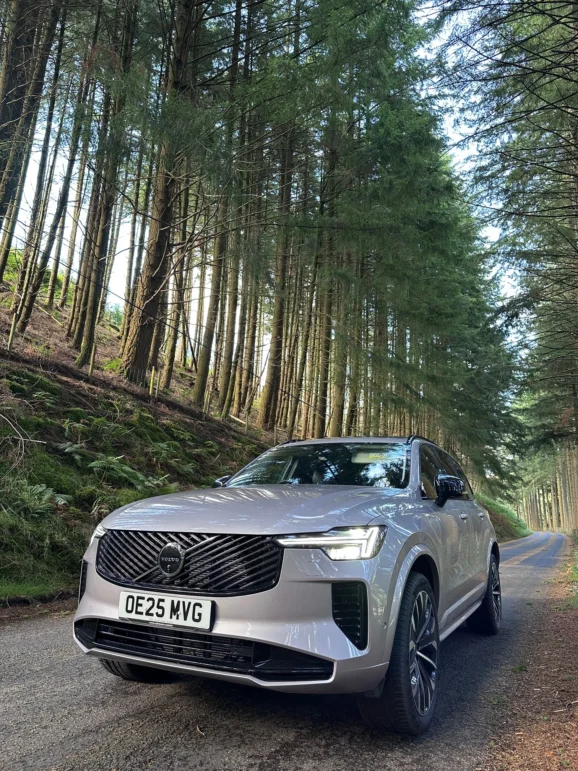
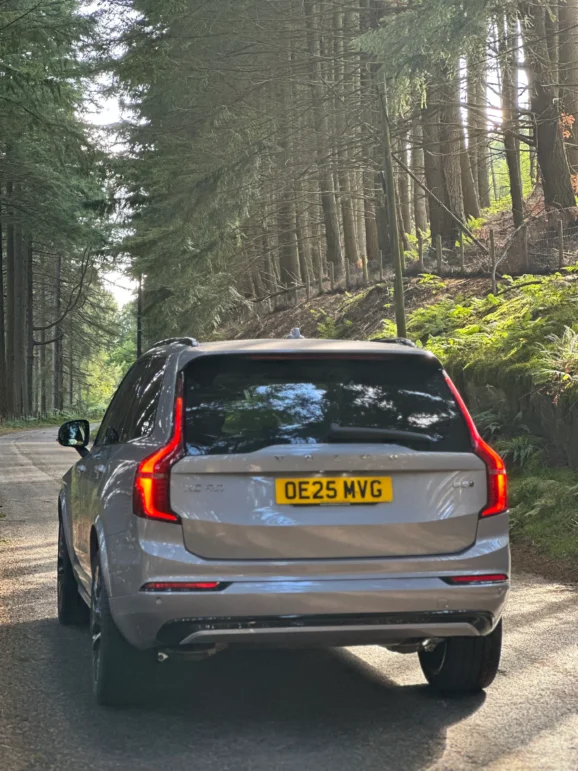
Verdict
The 2025 Volvo XC90 Ultra proved more than capable of handling a packed itinerary across varied terrain. From Liverpool’s streets to Snowdonia’s mountain passes, it combined comfort, control and understated style with genuine long-distance ability.
Minor gripes – climate controls buried in the touchscreen, a wireless charging quirk that maxed my iPhone’s volume, and the lack of USB-A ports – are easily outweighed by its space, refinement and capability.
Score: 9/10 – A long-distance luxury SUV as at home outside a Snowdonia B&B as it is gliding along the M6.

Mark G. Whitchurch is a seasoned motoring journalist whose work—covering road tests, launch reports, scenic drives, major races, and event reviews—has appeared in The Observer, Daily Telegraph, Bristol Evening Post, Classic & Sports Car Magazine, Mini Magazine, Classic Car Weekly, AutoCar Magazine, and the Western Daily Press, among others. He won the Tourism Malaysia Regional Travel Writer of the Year in 2003 and is a member of The Guild of Motoring Writers.
All photos: Mark Whitchurch
Sign up to The European Newsletter
RECENT ARTICLES
-
 Why Greece’s recovery depends on deeper EU economic integration
Why Greece’s recovery depends on deeper EU economic integration -
 Why social media bans won’t save our kids
Why social media bans won’t save our kids -
 This one digital glitch is pushing disabled people to breaking point
This one digital glitch is pushing disabled people to breaking point -
 Japan’s heavy metal-loving Prime Minister is redefining what power looks like
Japan’s heavy metal-loving Prime Minister is redefining what power looks like -
 Why every system fails without a moral baseline
Why every system fails without a moral baseline -
 The many lives of Professor Michael Atar
The many lives of Professor Michael Atar -
 Britain is finally having its nuclear moment - and it’s about time
Britain is finally having its nuclear moment - and it’s about time -
 Forget ‘quality time’ — this is what children will actually remember
Forget ‘quality time’ — this is what children will actually remember -
 Shelf-made men: why publishing still favours the well-connected
Shelf-made men: why publishing still favours the well-connected -
 European investors with $4tn AUM set their sights on disrupting America’s tech dominance
European investors with $4tn AUM set their sights on disrupting America’s tech dominance -
 Rachel Reeves’ budget was sold as 'fair' — but disabled people will pay the price
Rachel Reeves’ budget was sold as 'fair' — but disabled people will pay the price -
 Billionaires are seizing control of human lifespan...and no one is regulating them
Billionaires are seizing control of human lifespan...and no one is regulating them -
 Africa’s overlooked advantage — and the funding gap that’s holding it back
Africa’s overlooked advantage — and the funding gap that’s holding it back -
 Will the EU’s new policy slow down the flow of cheap Chinese parcels?
Will the EU’s new policy slow down the flow of cheap Chinese parcels? -
 Why trust in everyday organisations is collapsing — and what can fix it
Why trust in everyday organisations is collapsing — and what can fix it -
 In defence of a consumer-led economy
In defence of a consumer-led economy -
 Why the $5B Trump–BBC fallout is the reckoning the British media has been dodging
Why the $5B Trump–BBC fallout is the reckoning the British media has been dodging -
 WPSL Group unveils £1billion blueprint to build a global golf ‘super-group’
WPSL Group unveils £1billion blueprint to build a global golf ‘super-group’ -
 Facebook’s job ads ruling opens a new era of accountability for artificial intelligence
Facebook’s job ads ruling opens a new era of accountability for artificial intelligence -
 Robots can’t care — and believing they can will break our health system
Robots can’t care — and believing they can will break our health system -
 The politics of taxation — and the price we’ll pay for it
The politics of taxation — and the price we’ll pay for it -
 Italy’s nuclear return marks a victory for reason over fear
Italy’s nuclear return marks a victory for reason over fear -
 The Mamdani experiment: can socialism really work in New York?
The Mamdani experiment: can socialism really work in New York? -
 Drowning in silence: why celebrity inaction can cost lives
Drowning in silence: why celebrity inaction can cost lives -
 The lost frontier: how America mislaid its moral compass
The lost frontier: how America mislaid its moral compass











